WASHINGTON — California firefighters had to douse a flaming battery in a Tesla Semi with about 50,000 gallons of water to extinguish the flames following a crash, the National Transportation Safety Board (NTSB) said Thursday, Sept. 12.
In addition to the huge amount of water, firefighters used an aircraft to drop fire retardant on the “immediate area” of the electric truck as a precautionary measure, the agency said in a preliminary report.
Firefighters said previously that the battery reached temperatures of 1,000 degrees Fahrenheit while it was in flames.
The NTSB sent investigators to the Aug. 19 crash along Interstate 80 near Emigrant Gap, about 70 miles northeast of Sacramento. The agency said it would look into fire risks posed by the truck’s large lithium-ion battery.
The agency also found that the truck was not operating on one of Tesla’s partially automated driving systems at the time of the crash, the report said. The systems weren’t operational and “could not be engaged,” according to the agency.
The crash happened about 3:13 a.m. as the tractor-trailer was being driven by a Tesla employee from Livermore, California, to a Tesla facility in Sparks, Nevada. The semi left the road while going around a curve to the right and hit a tree, the report said. It went down a slope and came to rest against several trees. The driver was not hurt.
After the crash, the semi’s lithium-ion battery ignited. Firefighters used water to put out flames and keep the batteries cool. The freeway was closed for about 15 hours as firefighters made sure the batteries were cool enough to recover the truck.
Authorities took the truck to an open-air facility and monitored it for 24 hours. The battery did not reignite.
The NTSB said all aspects of the crash are under investigation as it determines the cause. The agency said it intends to issue safety recommendations to prevent similar incidents.
A message was left Thursday seeking comment from Tesla, which is based in Austin, Texas.
After an investigation that ended in 2021, the NTSB determined that high-voltage electric vehicle battery fires pose risks to first responders and that guidelines from manufacturers about how to deal with them were inadequate.
The agency, which has no enforcement powers and can only make recommendations, called for manufacturers to write vehicle-specific response guides for fighting battery fires and limiting chemical thermal runaway and reignition. The guidelines should also include information on how to safely store vehicles with damaged lithium-ion batteries, the agency said.
Tesla began delivering the electric semis in December of 2022, more than three years after CEO Elon Musk said his company would start making the trucks. Musk has said the semi has a range per charge of 500 miles when pulling an 82,000-pound load.
The Associated Press is an independent global news organization dedicated to factual reporting. Founded in 1846, AP today remains the most trusted source of fast, accurate, unbiased news in all formats and the essential provider of the technology and services vital to the news business. The Trucker Media Group is subscriber of The Associated Press has been granted the license to use this content on TheTrucker.com and The Trucker newspaper in accordance with its Content License Agreement with The Associated Press.








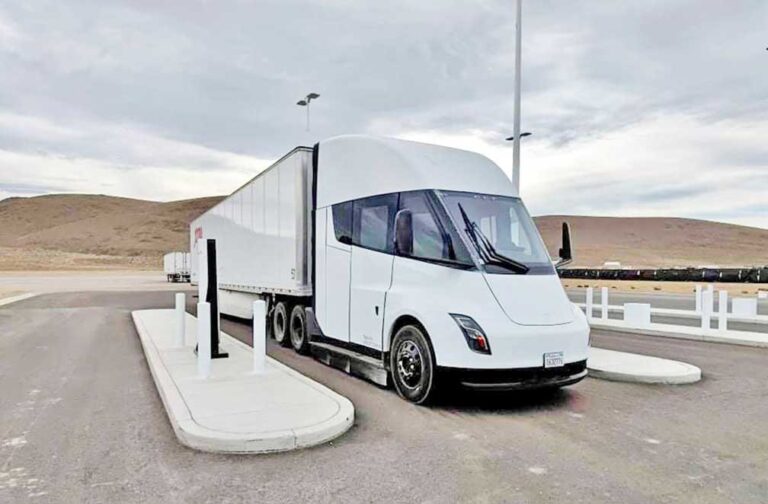

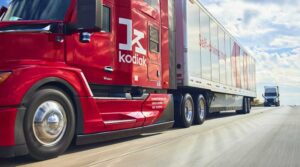
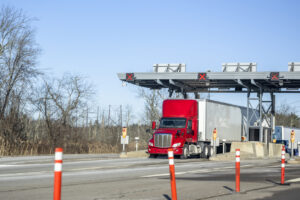
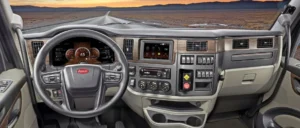
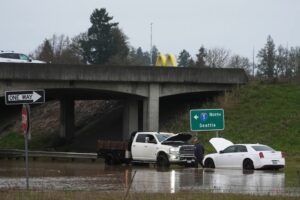
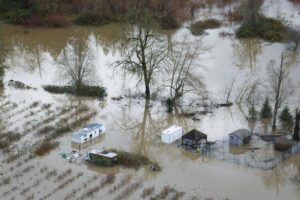

Such fires will continue to exist as long as lithium ion batteries are to be used. Why don’t they use the F-500 encapsulating agent that has been proven effective to extinguish these fires with significantly less water use? I have seen it in action and have been impressed with the results.
https://hct-world.com/wp-content/uploads/2023/04/B_ET_MF_Fluorine-Free-Firefighting.pdf
Can a “blanket” be produced that if necessary, -maybe using a drone- can be used to cover the area of the truck where the batteries are located?
I don’t thing EV trucks will go away anytime soon, so methods have to be created at dealing with these new types of situations.